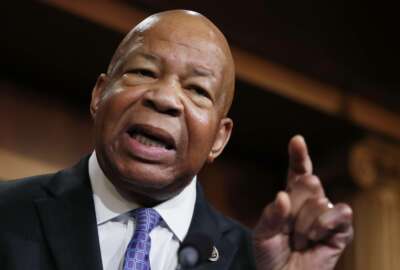

Amid budget uncertainty, agency chief financial officers are using data analytics to determine where the agencies can most effectively streamline programs.
The onboarding of the Trump administration and the president’s executive order to reorganize executive branch agencies has created its fair share of uncertainty within the federal bureaucracy.
For the moment, the organizational structure at most federal agencies remains an open question, at least until Congress passes a comprehensive spending bill that either embraces or rejects President Donald Trump’s reduction of the total federal workforce.
But amid the ongoing culture of continuing resolutions stalling out of these decisions — there have been 16 CRs since 2012 — federal managers, particularly agency chief financial officers, have been looking inward and using data analytics to determine where the agencies can most effectively streamline programs.
“I think the [presidential] transition has probably taken a little longer than in the past, and so there’s a longer cone of uncertainty,” Sheila Conley, the deputy CFO at the Department of Health and Human Services, said Wednesday at a panel sponsored by the Association of Government Accountants and Grant Thornton. “But the kinds of issues that we deal with and the fundamentals — the soundness of what we do in the CFO community — those continue uninterrupted.”
Chip Fulghum, the Homeland Security Department’s deputy undersecretary for management, and the department’s former CFO, said the chief financial officer’s job has been to provide a sense of stability amid some of the fears associated with a government reorganization.
“The value that they bring to enable the mission of the department is, to me, steadfast and steady,” Fulghum said. “Any time there’s chance, people tend to, for lack of a better word, wring their hands about what’s going to happen, and specifically what’s going to happen for them, and it’s up to leadership to help guide them through it.”
Keith Nelson, the Transportation Department’s assistant secretary for administration, said the agency workforce feels encouraged to submit reorganization suggestions.
“We’ve been coming in with very disruptive ideas, trying to modernize the air traffic controllers and try and work that through,” Nelson said. “That hasn’t happened yet, but we’re not giving up that effort. We’re certainly prepared for a major infrastructure rollout coming soon.”
After crowdsourcing for ideas to streamline the organization, Nelson said the agency’s CFO has weighed in to assess the potential cost savings.
“We actually kind of went far and wide to ask for creative ideas for how we might be able to reorganize government. We had an open website where the employees could throw their ideas against it. We had some big, big ideas, some of which we moved forward, and some of which we decided maybe doesn’t make sense at this time,” he said. “And so the CFO kind of helped us put the numbers to some of these ideas, how much savings would we really, necessarily get. Maybe not as much as the effort to push it forward.”
At DHS, Fulghum said, the reorganization has allowed the department to address systemic issues that have been around since it was created under the George W. Bush administration.
“The department is only about 15-years old. However, it’s had some long, nagging issues that need to be resolved once and for all, and we see this as an opportunity to do that,” Fulghum said. “But we resisted the urge to get right to the solution, rather than identifying what the problem was, and making sure that we went through a deliberative process so that we came up with the right outcome.”
While some solutions may appear in the fiscal 2019 budget, Fulghum said he expects more of those systemic issues to be addressed in the FY 2020 budget.
“Our CFO has done a remarkable job. OMB, in fact, has lauded the process we went through and the agency reform plan we built. Now, of course, is the hard part. We’ve got to deliver on what we said we were going to do,” he said.
In its latest study of federal, state and local CFOs, AGA found that number-one concern among respondents was budget uncertainty. In an environment of constant continuing resolutions, it’s become a perennial issue. But nobody’s going to overhaul the federal budget process overnight.
“We have found that enterprise risk management is a very helpful discipline to us. It just so happens that within our organization, we started down this road about five or six years ago, and now at this critical juncture, it’s really beginning to pay dividends for us, in that allows us to look across our various portfolios, lines of business, that sort of thing, so that we can figure out where are our greatest risks, and then begin to think about those risks that we can do something about, and how do we best align our resources with where those risks are,” Conley said.
In broadening the scope of what the CFO oversees, Conley added that she has seen the agency’s greatest risks have come from mission-support functions like human resources, acquisition and information technology systems.
“Those are the real issues and the highest risks that are facing our organization,” she said.
As for DHS, Fulghum said the expectation of more CRs and budget uncertainty has driven the need for better data analysis to identify where the department can move some of its infrastructure to a shared services model.
“You really have to sit back and ask, why do we have nine network security operation centers in the department,” he said. “Why do we have nine centers where we’re processing retirements? Why do we have all these same like capabilities throughout the department?”
Copyright © 2025 Federal News Network. All rights reserved. This website is not intended for users located within the European Economic Area.
Jory Heckman is a reporter at Federal News Network covering U.S. Postal Service, IRS, big data and technology issues.
Follow @jheckmanWFED

